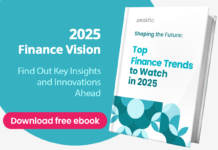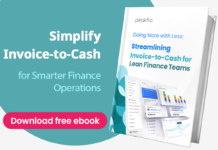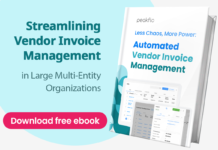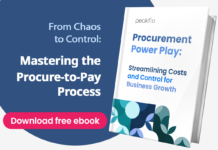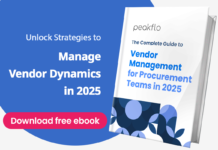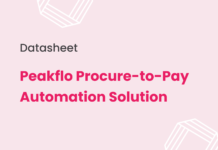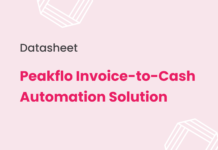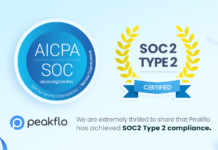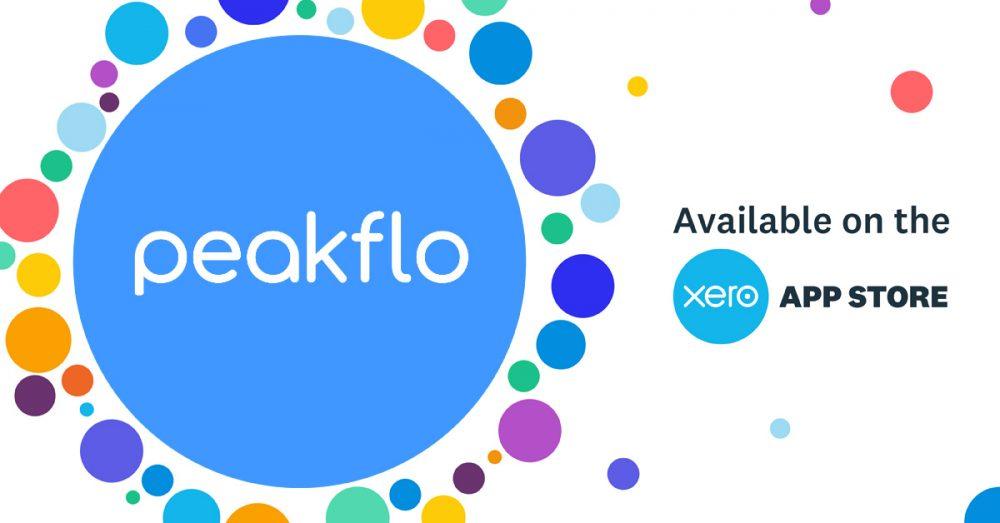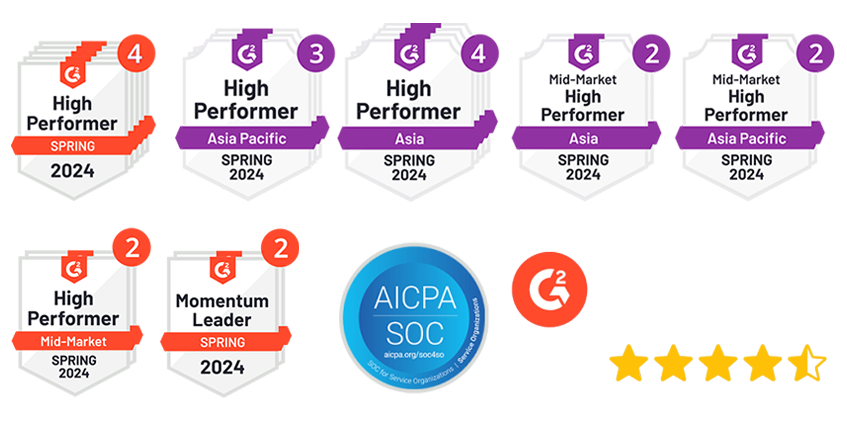Cash flow is the backbone of any business, circulating through its operations much like fuel drives an engine. It is a cyclical process that keeps the business running. That is why it is essential to understand how much cash is available and how much will be on hand in the months ahead. This process of predicting future cash is known as cash flow forecasting.
One key insight gained from cash flow forecasting is determining the company’s free cash flow. Free cash flow is the cash that remains after covering operational and capital costs for a certain time. By forecasting this, businesses can plan more strategically for growth and sustainability.
However, scalability is just one reason for forecasting cash flow. There are plenty of other advantages to projecting cash flow, which provides valuable insight and allows businesses to make informed decisions. Keep reading to explore the details of cash flow forecasting and how it can benefit your business.
Before moving forward, let us start with the basics and understand what cash flow forecasting is.
What is cash flow forecasting?
Cash flow forecasting helps you predict future sales, investments, and business expenses, giving you a clear picture of your company’s finances. With this knowledge, businesses can spot potential risks, avoid cash shortages, and make smarter financial decisions.
The finance team often leads cash flow forecasting, although it is not a one-person task. Collaboration across departments, leaders, and stakeholders is required for accurate and reliable results.
Why Are Cash Flow Management Strategies Crucial for a Company’s Future?
Cash flow forecasting goes beyond predicting future finances. It empowers businesses to tackle risks, manage debt, and fuel sustainable growth. Here is why cash flow management strategies are so important for a company’s future:
- Reducing Risk
Cash flow forecasting allows finance teams to closely examine expected sales and purchases while considering upcoming costs and risks. This helps them create reports that businesses can use to reduce risk and prepare for potential financial challenges. Peakflo reduces risk by automating the detection of expense anomalies, like double-billing or inflated claims, helping finance teams spot potential issues early. It also streamlines data validation and document processing, minimizing manual errors.
- Staying on Top of Debt
With cash flow forecasting, finance managers can see how much cash the business has now and what future expenses look like. This helps them ensure enough money to make timely debt and interest payments.
When businesses are in debt, lenders often set specific rules, called debt covenants, which ensure the company stays financially stable enough to repay the debt. Cash flow forecasting helps finance teams spot potential cash flow problems early so they can fix them before breaking any of those rules.
Peakflo simplifies cash flow monitoring by automating the process and identifying potential risks early. It offers real-time insights, allowing businesses to spot issues before they escalate.
- Planning for Growth
Cash flow forecasting also helps businesses determine when they will have extra cash. This lets them quickly plan their growth strategies and invest in new opportunities. Peakflo enhances this by offering clear, real-time cash flow insights. This allows companies to spot surplus cash quickly and act on new opportunities without delay. It simplifies planning for expansion or new investments, helping businesses grow confidently.
Understanding Cash Flow Projections
A cash flow projection gives you a clear view of the money expected to come in and go out of your business. It calculates your income and expenses, helping you see what is left after a set period. This projection might show you have extra cash available for investments or reveal a shortfall with lower-than-expected earnings.
To create an accurate cash flow forecast, you need a solid grasp of your accounts receivable and accounts payable. The projection is the difference between these two, giving you a snapshot of your cash today and what to expect in the future. It also helps you identify when you will have extra money or need more funding.
Here is a quick breakdown:
- Accounts Receivable is the money you expect to collect, such as customer payments, deposits, grants, rebates, or bank loans.
- Accounts Payable covers payroll, supplier payments, rent, taxes, and other recurring costs.
Now, let us dive into the essential elements that make a forecast accurate and reliable.
4 Key Components of a Cash Flow Forecast
Every business has unique cash flow items based on its specific needs. Some companies focus on general accounts receivable and payable, while others prefer to dive deeper, forecasting based on individual payments or deposits.
Here are the main components you will find in a cash flow forecast:
- Cash Inflows
Cash inflows are the funds you expect to receive during the forecast period. This includes sales revenue, loans, investments, rental income, and other incoming cash. Cash inflows are critical for keeping your business running and ensuring you have the liquidity to cover your expenses. Peakflo automates billing and collection follow-ups, ensuring timely payments and maintaining your business’s financial health.
- Cash Outflows
Cash outflows refer to the money your business expects to spend during the forecast period. These include payments for raw materials, salaries, rent, utilities, loan repayments, taxes, and other expenses. Keeping a close watch on cash outflows is essential to ensure you have enough funds to cover them without risking your financial stability. Peakflo tracks and analyzes expenses in real-time. It simplifies payment management, helping businesses maintain balanced cash flow.
- Opening Cash Balance
The opening cash balance is the amount of cash you have at the start of the forecast period, carried over from the previous period. It is the starting point for your forecast and gives you a snapshot of where you stand as you move into the new period.
- Closing Cash Balance
What is left over after the projected period is known as the closing cash balance. Calculate it by taking your opening cash balance, adding your total inflows, and subtracting your total outflows. This final number tells you how much cash you will have at the end of the period and can be carried over as the opening balance for the next forecast.
How to Prepare a Cash Flow Forecast?
Before diving into cash flow forecasting, there are two essential choices you need to make:
- The time frame for your forecast
- Whether to use a direct or indirect cash flow projection method.
- Following that, you have to collect the data required for your forecast.
1. Choose Your Timeframe
Before you start, deciding how far into the future you want to forecast is essential. The time frame you choose will depend on your business needs and the level of detail you require.
- Short-term Forecasting
Short-term forecasts cover a month or less—sometimes just days or weeks into the future. This type of forecasting is ideal for managing liquidity in the short term. It benefits small businesses that need real-time insight into cash inflows and outflows. With fewer credit options than larger companies, small businesses can plan payments and avoid cash flow shortages.
- Medium-term Forecasting
Medium-term forecasts look ahead for two to six months. This projection helps you manage interest payments, reduce debt, and better understand potential risks that may arise shortly.
- Long-term Forecasting
Annual planning often uses long-term cash flow projections covering six to twelve months. These forecasts provide a broader view, helping businesses align their growth strategies and capital projects. While long-term forecasts are not updated monthly and can be less precise, they help plan major financial moves.
- Mixed-period Forecasting
Mixed-period forecasts combine multiple time frames. For instance, you might create daily forecasts for the next few weeks alongside weekly forecasts covering the following months. This approach gives you a clearer picture of cash flow where it’s needed most.
Remember that the longer the time frame, the more complex and less accurate the forecast tends to be. Forecasting requires assumptions about the future, and predictions become less reliable the further you go.
2. Direct Vs. Indirect Cash Flow Forecasting
There are two main methods of cash flow forecasting: direct and indirect. The direct method is excellent for managing cash daily, while the indirect method helps with long-term strategic planning.
- Direct method
The direct method takes a bottom-up approach, focusing on actual cash collected and spent over a specific time frame. It relies on customer payment patterns and sales projections to build estimates. This method works best for short- to medium-term forecasts, giving businesses real-time insight into their cash flow.
- Indirect method
The indirect method is based on forecasted income statements and balance sheets. It aligns cash flow predictions with financial plans and budgets, making it more suitable for long-term strategic planning. This method is often used when looking at the bigger picture for your business’s economic future.
3. Get the Information You Need for Your Cash Flow Prediction
You must gather key information regarding the accounting cycle to create an accurate cash flow projection. Here is the essential data you should have on hand:
- Financial Statements: This includes income statements, balance sheets, and cash flow statements.
- Taxes: Sales tax reports.
- Payroll: Payroll reports include wages, taxes, perks, and deductions.
- Opening balance: The balance at the start of the forecast period.
- Closing balance: The balance at the end of the forecast period.
- Receivables: Expected sales, such as invoices that will likely be paid in the next period.
- Payables: Anticipated expenses, like rent, utilities, marketing, and more, for the upcoming period.
Let us look at some formulas and examples to see them in action.
Cash Flow Forecast Example
Let us examine a sample three-month cash flow projection for a fictional company offering enterprise solutions, TechTools Ltd.
We will break down each formula into Free Cash Flow (FCF), Operating Cash Flow (OCF), and Cash Flow Forecast (CFF), applying specific numbers for a 3-month forecast.
Key Data:
- Net Income:
- January: $25 million
- February: $28 million
- March: $30 million
- Depreciation:
- January: $5 million
- February: $6 million
- March: $5 million
- Change in Working Capital (WC):
- January: $3 million
- February: $4 million
- March: $2 million
- Capital Expenditure (CE):
- January: $10 million
- February: $15 million
- March: $12 million
- Operating Income:
- January: $30 million
- February: $35 million
- March: $40 million
- Taxes:
- January: $4 million
- February: $5 million
- March: $5 million
- Projected Income (cash inflows):
- January: $30 million
- February: $106 million
- March: $117 million
- Projected Expenses (cash outflows):
- January: $36 million
- February: $41 million
- March: $62 million
- Beginning Cash:
- January: $50 million
1. Free Cash Flow (FCF) Calculation
This shows how much cash remains after covering operational costs, changes in working capital, and capital expenditures. It is a crucial indicator of whether a company has the funds to invest or support growth.
| Formula: FCF = Net Income + Depreciation – Change in Working Capital (WC) – Capital Expenditure (CE) |
For January:
- Net Income = $25 million
- Depreciation = $5 million
- Change in WC = $3 million
- Capital Expenditure (CE) = $10 million
FCF for January = $25M + $5M – $3M – $10M = $17 million
For February:
- Net Income = $28 million
- Depreciation = $6 million
- Change in WC = $4 million
- CE = $15 million
FCF for February = $28M + $6M – $4M – $15M = $15 million
For March:
- Net Income = $30 million
- Depreciation = $5 million
- Change in WC = $2 million
- CE = $12 million
FCF for March = $30M + $5M – $2M – $12M = $21 million
2. Operating Cash Flow (OCF) Calculation
This focuses on the cash generated from the company’s core business activities. It adds back non-cash expenses, like depreciation, and adjusts for taxes and changes in working capital. OCF helps gauge how well a business generates cash from its daily operations.
| Formula:OCF = Operating Income + Depreciation – Tax + Change in Working Capital (WC) |
For January:
- Operating Income = $30 million
- Depreciation = $5 million
- Tax = $4 million
- Change in WC = $3 million
OCF for January = $30M + $5M – $4M + $3M = $34 million
For February:
- Operating Income = $35 million
- Depreciation = $6 million
- Tax = $5 million
- Change in WC = $4 million
OCF for February = $35M + $6M – $5M + $4M = $40 million
For March:
- Operating Income = $40 million
- Depreciation = $5 million
- Tax = $5 million
- Change in WC = $2 million
OCF for March = $40M + $5M – $5M + $2M = $42 million
3. Cash Flow Forecast (CFF) Calculation
This provides a clear picture of the company’s cash position at the end of each month by considering all income and expenses. It helps determine if the business has enough liquidity to meet its financial obligations.
Formula:
| CFF = Beginning Cash + Projected Income – Projected Expenses = Ending Cash |
For January:
- Beginning Cash = $50 million
- Projected Income = $30 million
- Projected Expenses = $36 million
CFF for January = $50M + $30M – $36M = $44 million
For February:
- Beginning Cash = $44 million
- Projected Income = $106 million
- Projected Expenses = $41 million
CFF for February = $44M + $106M – $41M = $109 million
For March:
- Beginning Cash = $109 million
- Projected Income = $117 million
- Projected Expenses = $62 million
CFF for March = $109M + $117M – $62M = $164 million
Factors that May Affect Your Cash Flow Forecasting
When forecasting cash flow, several factors can affect the accuracy of your projections. These include:
- Seasonality and Business Cycles
Industries often experience seasonal fluctuations that impact cash flow. Understanding the cyclical nature of your business and adjusting for changes in sales and expenses during peak or off-peak seasons is key to accurate forecasting.
- Market Conditions and Competition
Economic trends, market shifts, and competitive forces can all affect customer demand, pricing, and payment behavior. Using AI to monitor cash flow ensures your forecast stays realistic and up to date.
- Customer Payment Terms and Habits
The payment terms you offer and your customers’ behavior directly influence when you receive cash. Analyzing previous payment trends might help you better manage your cash inflows and anticipate future collections.
- Supplier and Vendor Relationships
The payment terms you negotiate with vendors affect when cash flows out. Monitoring and optimizing these terms can help you manage outflows and keep your forecast on track.
- Inventory Management
Managing inventory efficiently is crucial for cash flow. Ensuring the right balance between stock levels, lead times, and sales projections helps prevent cash shortages from overstocking or missed sales due to insufficient inventory.
Challenges Faced During Cash Flow Forecasting
As mentioned earlier, investing in cash flow forecasting is highly valuable. However, it comes with challenges and requires significant resources from the company.
Even though modern software has made cash flow forecasting easier, many businesses still need to rely on manual processes. Manual forecasting can be time-consuming and prone to errors, which may lead to various cash flow issues.
1. Time and Effort
Finance teams are often already stretched thin. Cash flow forecasting requires them to gather, centralize, and standardize data from different departments. When done manually, it means long hours spent in spreadsheets, making the process even more labor-intensive and time-consuming.
Solution: Peakflo makes cash flow forecasting easier for busy finance teams. Instead of manually gathering data from different departments and spending long hours on spreadsheets, Peakflo automates the process. It pulls real-time data, organizes it, and updates forecasts without manual effort.
2. Data Contamination
Manual data entry can lead to mistakes and inconsistencies. These errors can result in data contamination, which can distort the accuracy of the cash flow forecast and lead to unreliable financial reports.
Solution: Peakflo makes data entry easier with its automated 3-way matching system. It compares invoices, purchase orders, and receipts automatically, reducing errors from manual work. This leads to more accurate cash flow data, saves time, and keeps everything consistent. Finance teams benefit by getting reliable data without extra manual checks.
3. Delayed Data Collection
While finance teams understand the urgency of accurate cash flow forecasting, other departments might need to be made aware. This can result in delays in providing the necessary data or supplying it in less useful formats, further complicating the process.
Solution: Peakflo makes cash flow management easier by integrating all financial data into a centralized platform, giving finance teams real-time access from different departments. This reduces delays caused by missing or mismatched data. With automated data collection and simple workflows, Peakflo ensures that all the needed information is ready in a consistent format.
Stay on Top of Cash Flow with Peakflo’s AI-powered Solution
Peakflo offers a real-time AI-powered cash flow forecasting tool that enables you to make accurate strategic decisions Here are some standout features:
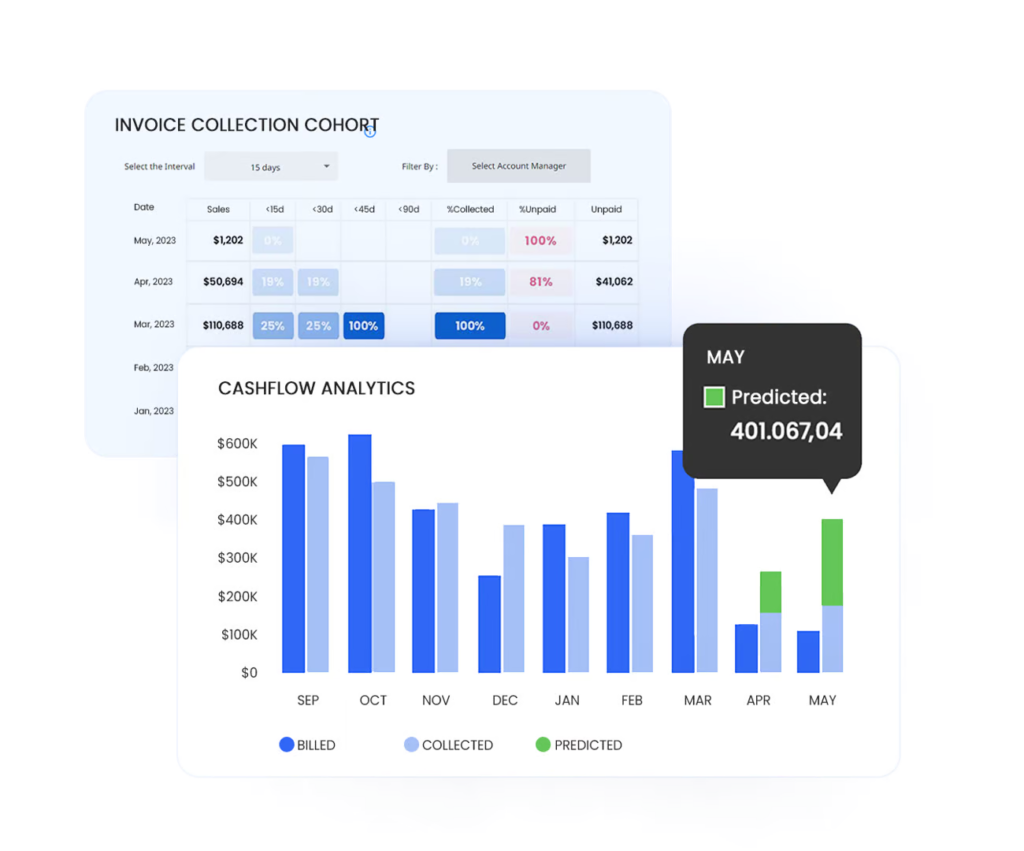
- Cash Flow Analytics: Peakflo uses smart cash flow management tools that help you understand your company’s cash flow health by easily visualizing the total amount billed and collected each month.
- Cash Flow Forecasting: Peakflo’s AI-powered analytics make it easy to predict your future cash flow. It analyzes historical billing and collection patterns to provide accurate forecasts.
- Invoice Management: A central dashboard helps you quickly spot which invoices are paid, overdue, or have problems, keeping cash flow steady.
- Accounts Receivable Reports: Custom reports show important information, such as late payments, amounts owed, and payment times.
- Automated Payment Reminders: Automatic email, SMS, and WhatsApp reminders ensure collections happen on time.
- Customer Payment Behavior: AI-powered reports show which customers might delay payments so you can act quickly. It also includes an automatic approval system for faster responses.
With Peakflo’s tools in your arsenal, staying ahead of cash flow becomes seamless. Let us wrap up with some key takeaways.
Conclusion
Cash flow forecasting needs accurate financial data. Automated tools, like revenue or expense management software, give you live and past data, making forecasts more reliable.
By using tech, you can make better predictions and help your company make smarter financial decisions.
Want an easier way to manage cash flow? Take a product tour of Peakflo and see how our platform simplifies forecasting and budget management!


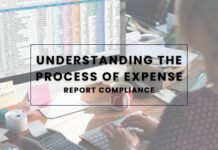







![Why AI Sales Calls Are Making Good Sales Reps Even Better [2025 Guide] ai sales calls](https://blog.peakflo.co/wp-content/uploads/2025/09/65168cf6-3001-4733-8cbc-12d5684cf449-218x150.webp)





